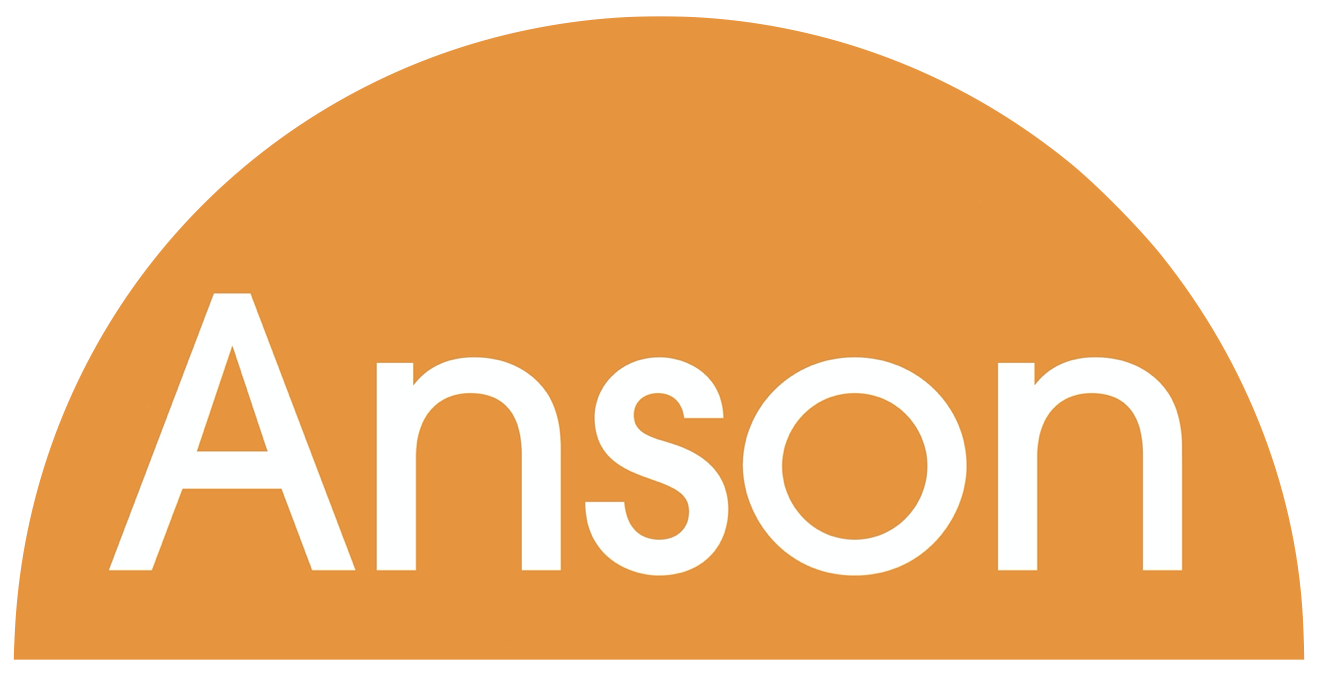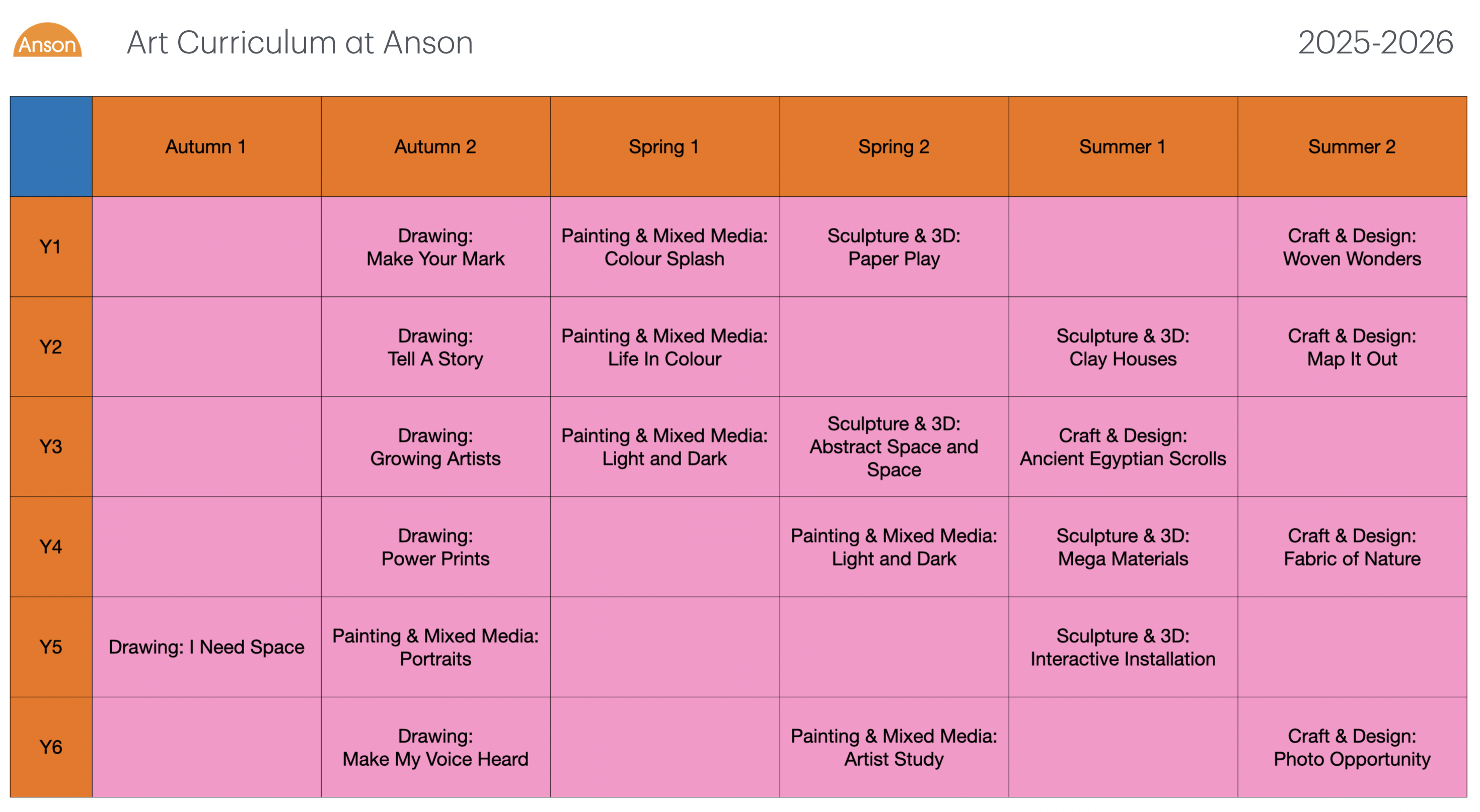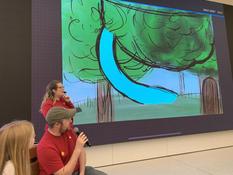Art

The Intent
As a school with a vision for happy, confident and creative children our curriculum embraces the use of art across all subjects. This page gives a glimpse of some of the fantastic work happening at Anson Primary School.
Children are encouraged to develop a range of materials, creatively, from a young age to express themselves, share their ideas and unlock their imaginations. As a school with an emotion in our vision statement it isn't surprising that we use art to unlock the feelings of pupils but here are the other intentions of our curriculum:
- For all children to have the confidence to see themselves as an artist.
- For children to acquire a range of different skill and experiences and part of their learning journey.
- For children to explore a wide range of techniques in order to develop their skills.
- For children to explore the work famous artists, architects and designers.
- For children to build on their prior learning in order to achieve mastery in their approach to their learning.
- To celebrate all children’s work and achievements.
The Implementation
It is important to us that art is embedded across the curriculum and linked to our focus areas of learning. Artist John Dyer's 'Last Chance to Paint' project aimed to make lasting and positive connections between children and the natural world. During our science and geography 'Rainforest' focus in Year 2, the children took part in a live art workshop with John, creating some stunning pieces of work.
Connecting children to artists is an important part of our work. The audience for children's work doesn't not need to be limited to them and their teacher. In a world of fast connections and social media we can get immediate feedback from artists, sculptors, architects and designers around the world.
The feedback we receive gives the children an increased sense of pride, a real sense of joy, and a desire to improve the quality of the work for the original artists.

As Paul Cezanne said, "an art which isn't based on feeling isn't an art at all ... feeling is the principle, the beginning and the end; craft, objective, technique - all these are in the middle".
And so our children express themselves, use their own style and voice to share their feelings and emotions, to generate ideas, to explore line, shape, tone, texture pattern and colour and to evaluate and analyse.
Lessons are sequential which allows children to build up their skills and knowledge and we have clear progression skills across all year groups.
All children’s works is celebrated though sharing assemblies, parent’s evenings and class displays and with artists, authors, designers and illustrators.
For example, in English, having read Wonder by R. J. Palacio, the children in Year 5 explored their own uniqueness inspired by the book and the cover art for the film.
We also look to give the children authentic experiences, taking part in the major projects with the Science Museum and Tate over the years.
Steve McQueen Year 3 Project - Tate
And technology plays an important part too. We embed art into Computing using robots to code colour and using colour to command robots. We also use Apple Field Trips to teach pupils new skills on iPad.
|
|
|
|
Our Design work is all about experimenting with different materials, building skills that help pupils to understand how the materials can help to define a structure in strength or appearance.
We use modelling to create our own architecture and print this using our 3D printer. This allows us to explore mathematical shape, computing and design.
Our hands on activities around history and geography encourage creativity in design too.
Importantly, as with all our work at Anson, we try to give the children a voice. Their design work on the subject of plastic pollution led to the school working with Into Film and 104 Films and director Justin Edgar.
As part of an Eco-Council project aimed at reducing plastic consumption, a team of filmmakers in Year 3 to 6 gathered plastic bottles from the entire school community and designed a house for one solitary fish. The message was simple, our fish swim in this plastic all the time and we need to be more careful about our use of plastic.
The resulting film was shortlisted for a national film award at the Into Film Awards.
Plastic Fantastic
The impact
- Children are able to express themselves through art and be able to justify their views and opinions on other people’ art.
- Children grow up to be aware of their surroundings and the beauty of nature as the starting point to create art.
- Children become proficient in drawing, painting, sculpture as well as craft and design techniques.
- Children can explore emotions including happiness.
- Children are confident in their abilities as an artist.
- Children enjoy art, both as creators and consumers, for the remainder of the education and beyond.
Curriculum Map 2025-2026








